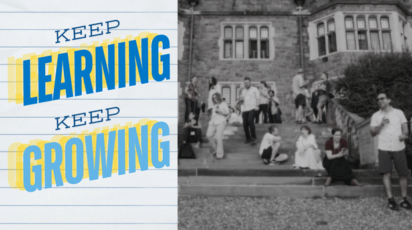News
Exploring Early Decision

by Carly Pyles ’22, Editor-in-Chief of The Polygon
From the first day of school in September to mid-December, every member of the Class of 2022 was repeatedly asked the same all-consuming, million-dollar question by their peers: “Where did you ED?”
Over 80 percent of this year’s senior class applied to college through an early decision or restricted early action plan; 55 percent were admitted.
Early Decision and the Dean Model at Poly
Applying to college “early decision” entails an earlier admissions deadline, an earlier notification of acceptance/rejection, and a binding agreement to enroll at the institution upon acceptance. The first preliminary early decision plans began in the late-1950s, among smaller New England colleges. However, ED, as we recognize it today, truly took off during the 1980s and 1990s. While early decision is not a new concept, the number of students within and outside of Poly who have applied to an institution under an early decision plan has skyrocketed in the last couple of years. In 2016, 41 percent of the senior class applied ED; meanwhile, that number rose to 76 percent in this year’s senior class. The deans attribute this trend to the implementation of the new dean model in 2017, which enabled the college counseling system to become more personalized than it had previously been. Rather than having two deans assigned to each grade with a separate grade-wide college counselor, students are now assigned a dean at the beginning of freshman year who works with them throughout their next four years at Poly.
Navigating ED Options
The percentage of students who apply ED is so high because Poly’s deans — who function as a team of college counselors — encourage their students to take advantage of this opportunity, as applying early decision may provide the highest chance of being admitted to selective colleges. Colleges and universities are businesses that want to protect their yield, meaning the percentage of students who enroll after being accepted. Therefore, signaling through ED that a school is your first choice, and that you will attend if accepted, often raises your admissions odds. Students can also demonstrate interest through a restricted early action (REA) plan; applicants are not bound to attend the school, but they are restricted from applying early decision anywhere else. Only a few colleges have an REA option.

Emily Gardiner, one of Poly’s five Upper School deans, said, “Whenever a student has a school they especially like that has ED, it would be irresponsible as a college counselor not to recommend it. In general, data shows that ED can raise your admission chances almost no matter what. It can’t turn an unrealistic reach school into a target, so aiming both high and smart is key.”
As Gardiner noted, it is critical to use the ED option strategically. Many students fear “wasting” their ED –– if students reach too high in early decision and miss on their top-choice school, they may have lost out on their best opportunity to be accepted to an institution. They will then have to choose whether they will apply ED2 or stick to a regular decision plan.
ED and Financial Aid Strategies
From a financial-aid standpoint, it is also important to be very strategic with ED. The deans have different recommendations for full-paying students as opposed to students who qualify for full or partial financial aid.
Gardiner explained, “Families who qualify for significant or full financial aid are nearly always well-served by ED/REA, as long as they work with their dean to apply to schools that meet 100 percent of need and are reasonable reaches. In those scenarios of a high-need applicant at colleges of that type, simply getting in means full financial aid, so early admission does not change the cost. Also, some colleges are need-sensitive because they allocate their money responsibly, meaning it’s smarter to apply early as a full-FA applicant when funds are most available.”
For families who qualify for smaller amounts of financial aid, the deans may shift their strategy. According to Gardiner, it simply depends on “the student applying and what their interests and strengths are.” She continued, “We’ve counseled students whose goal was merit or non-need-based aid only and for them, an EA/RD approach has sometimes yielded the best results.”
Seniors Weigh In On ED Experience
Numerous students are content with their decision to ED and found it easy to commit to a school that they felt was a realistic reach for them. If students can pin down a school that they would be happy to attend if accepted, early decision is a great opportunity.
Senior Zoe Feuer said, “I applied early decision to a school because I knew the chances of getting into my top choice school were much higher because they take a large portion of their incoming class ED. In my opinion, it paid off.”
Senior Lami Diallo is of a similar opinion, adding, “The ED process as a whole is a bit scary, especially considering that it’s binding. But looking back, I actually liked it because I knew that I wanted to go to UPenn since sophomore year, so ED was a chance for me to show my interest in the school as well as get the college process over with. Sure, it’s a bit scary committing to one school, but I think if you really like a school above everything else, you should take advantage of the ED process.”
However, other students are not as comfortable with the ED strategy. Whether it be due to its binding nature or its connotation as one’s “golden ticket” to college, not to be wasted under any circumstances, choosing to apply early decision can feel very high stakes.
“There’s a lot of pressure at Poly pertaining to the need to attend a top school, and getting into your first-choice ED. Because of this pressure and a lot of fear of failure and rejection, a lot of people, myself included, end up not applying to the schools that they wanted to go to,” said senior Brianna Khrakovsky. She explained how some students feel that they have to make a calculation between the schools they want to go to and the ones they think they have the best shot of getting into with ED. “It sucks, because a lot of people give up on their dreams and never get the chance to know if they would’ve actually gotten in.”
Other students choose to abstain from the ED process altogether, choosing to apply under only non-binding early action and regular decision programs.
Uma Sooran is one of just under 20 percent of seniors who chose not to apply ED or REA anywhere.
She shared, “The negative aspect of not EDing is definitely waiting longer for your results as you watch a lot of your friends finish with the college process in December. It can be hard waiting, but I still think it’s worth it at the end of the day. The main reason why I didn’t ED is because it is a binding agreement, and I did not feel comfortable enough with one school to commit without exploring other options. As you find out your results, hopefully you have more than one option, and you can learn more about each option before committing to a school.”
Note: This article was originally published in The Polygon’s February 2022 issue.



